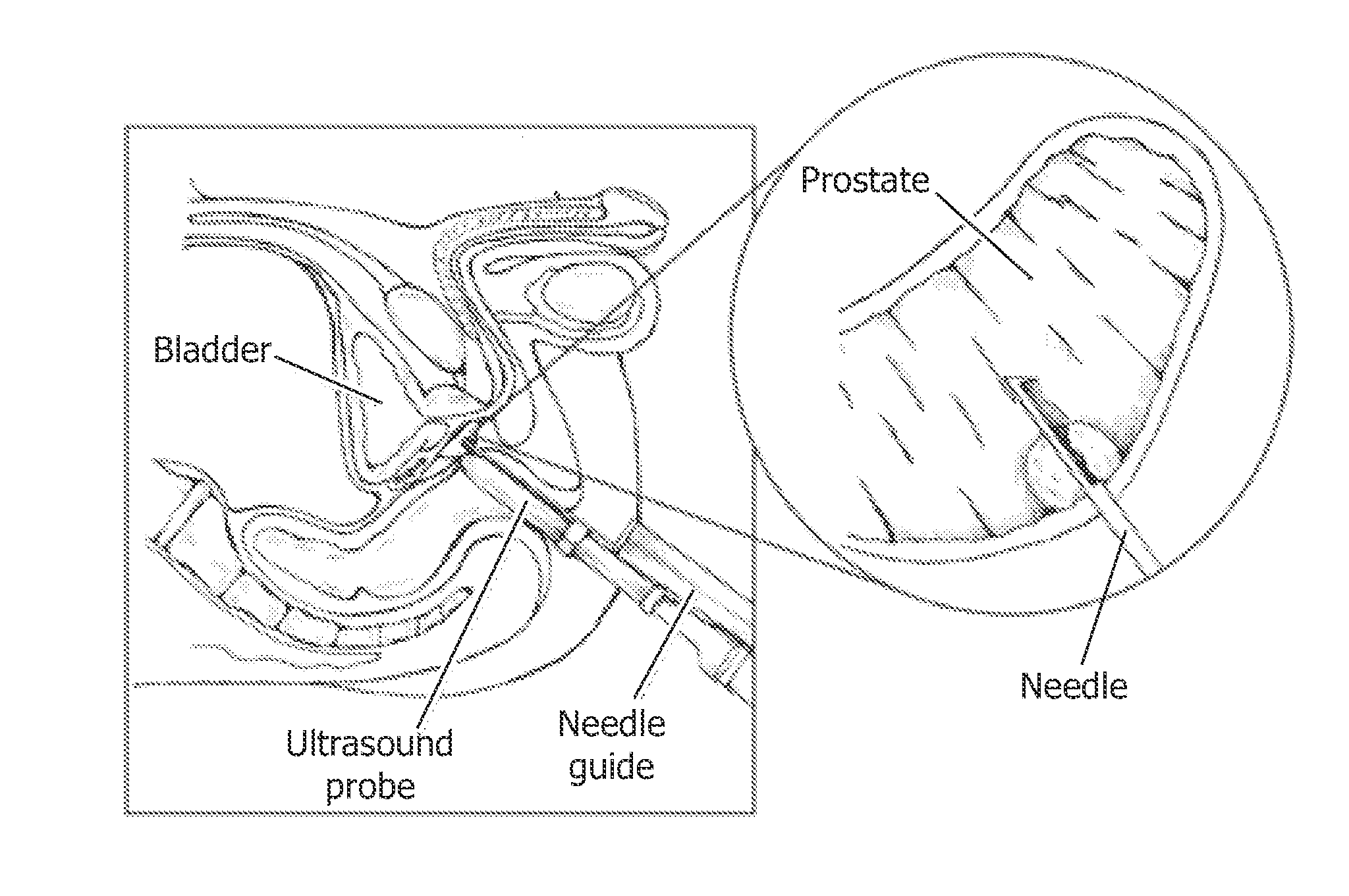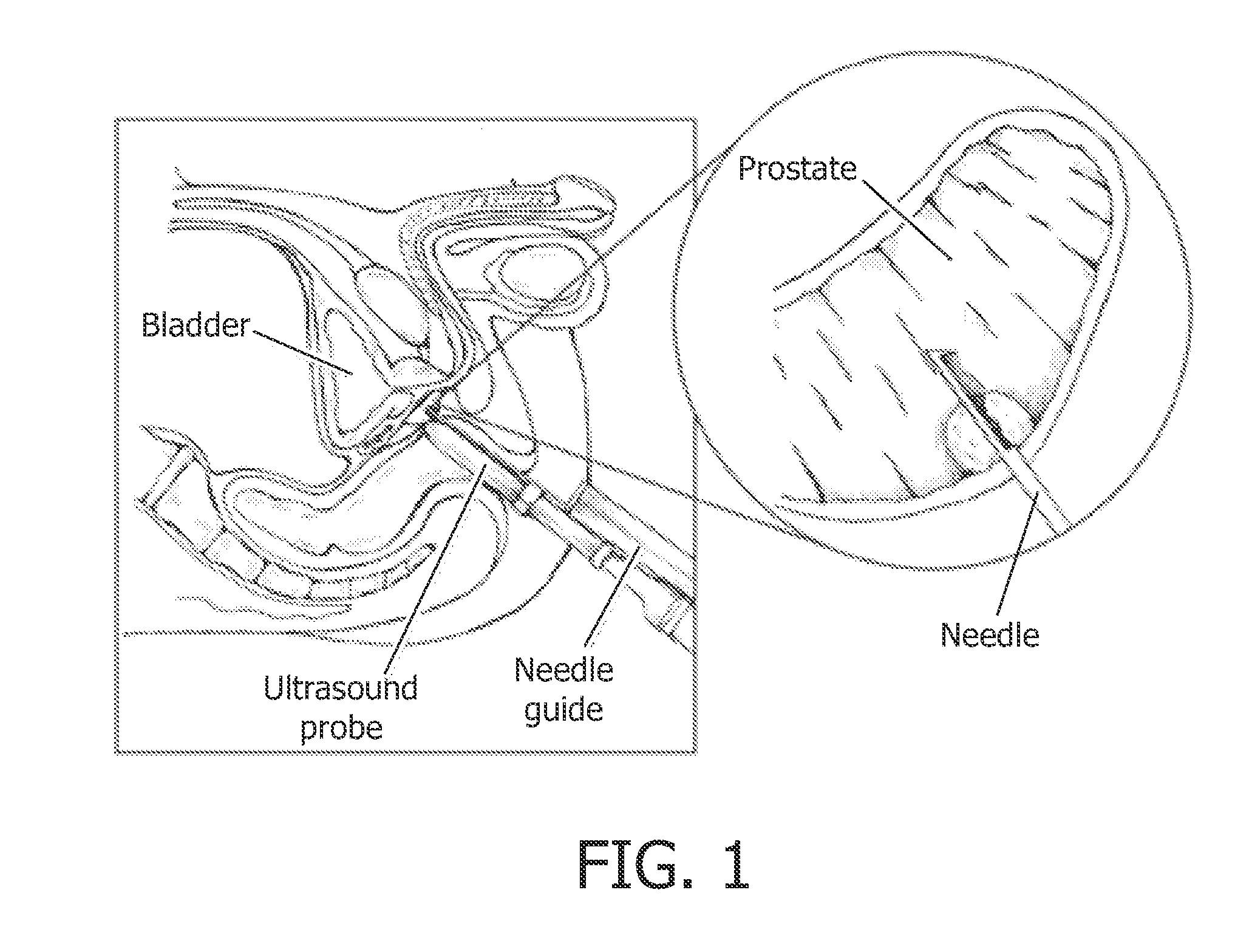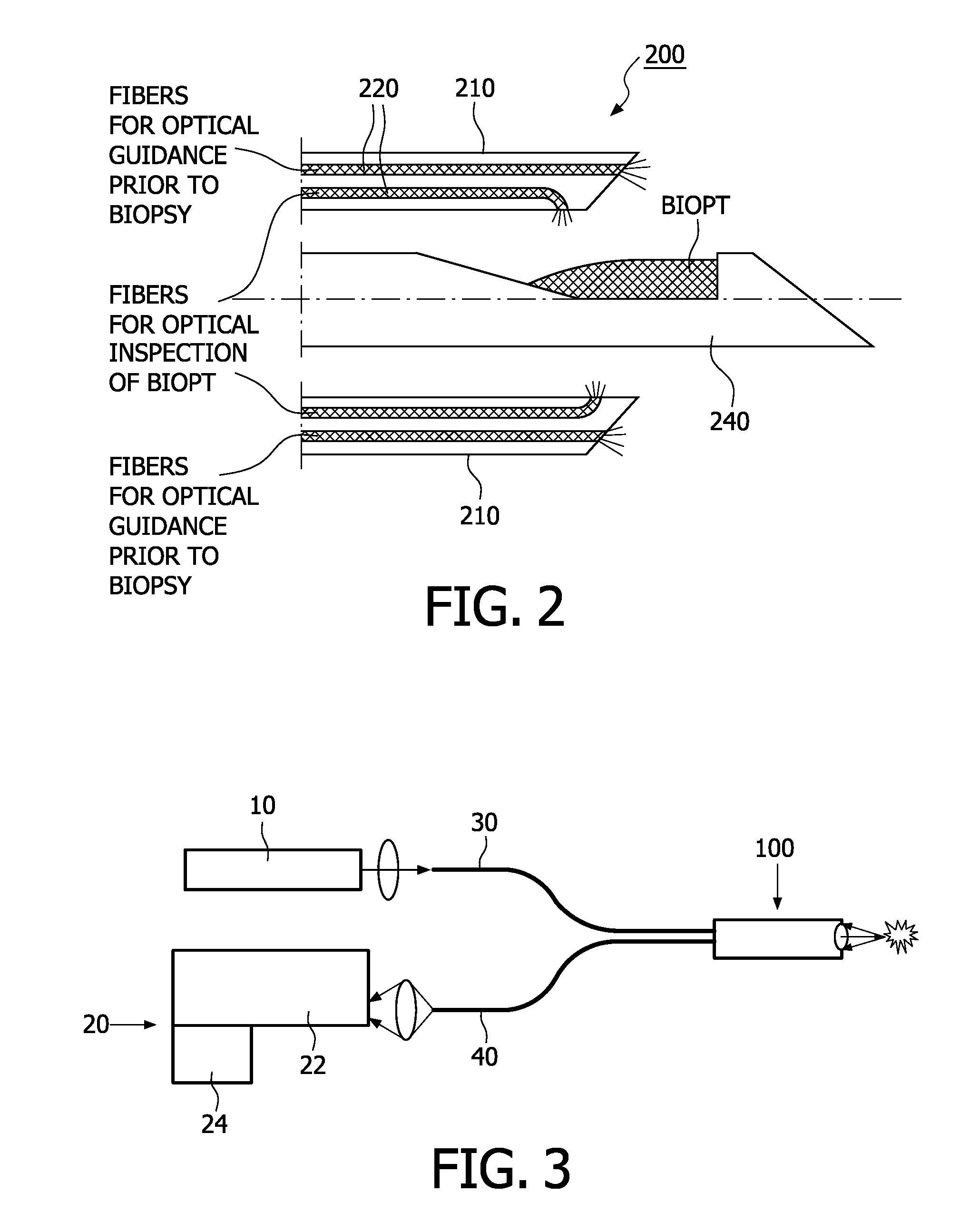Biopsy guidance by electromagnetic tracking and photonic needle
a technology of electromagnetic tracking and photonic needles, applied in the direction of catheters, diagnostics using spectroscopy, applications, etc., can solve the problems of limited imaging system resolution, insufficient tissue characterization, and insufficient tissue characterization, so as to achieve reliable tissue characterization
- Summary
- Abstract
- Description
- Claims
- Application Information
AI Technical Summary
Benefits of technology
Problems solved by technology
Method used
Image
Examples
Embodiment Construction
[0041]The first embodiment is based on a needle navigation based needle guidance system as described in U.S. Pat. No. 6,785,571. Furthermore, the shaft 210 of the biopsy device 200 contains a fiber 220 or fiber bundle (see FIG. 2). Further, the shaft 210 is adapted to accommodate a needle 240 for taking a biopt. Preferably, the fiber bundle 220 is located in the shaft 210 such that the respective ends of the fibers are located in the tip portion of the biopsy device. In other words, some of the fibers might end in the front surface of the biopsy device, and / or some of the fibers might end in the vicinity of the front surface at the side surface or wall surface of the biopsy device. Furthermore, there could be some fiber ends orientated in the direction to a biopt harvested by the biopsy device, and some other fiber ends orientated in the direction to the front or the side of the biopsy device, for optical guidance prior to biopsy.
[0042]It is noted, that any fiber might be used to em...
PUM
 Login to View More
Login to View More Abstract
Description
Claims
Application Information
 Login to View More
Login to View More - R&D
- Intellectual Property
- Life Sciences
- Materials
- Tech Scout
- Unparalleled Data Quality
- Higher Quality Content
- 60% Fewer Hallucinations
Browse by: Latest US Patents, China's latest patents, Technical Efficacy Thesaurus, Application Domain, Technology Topic, Popular Technical Reports.
© 2025 PatSnap. All rights reserved.Legal|Privacy policy|Modern Slavery Act Transparency Statement|Sitemap|About US| Contact US: help@patsnap.com



